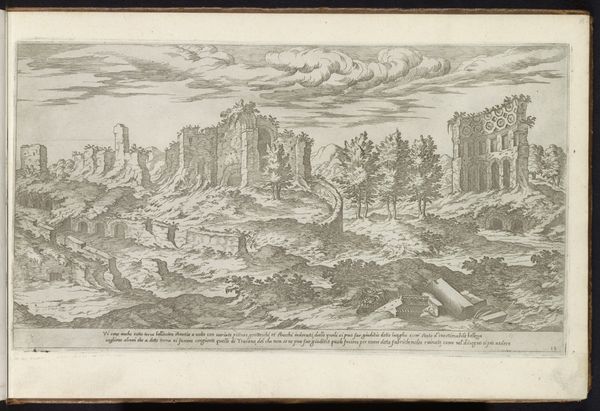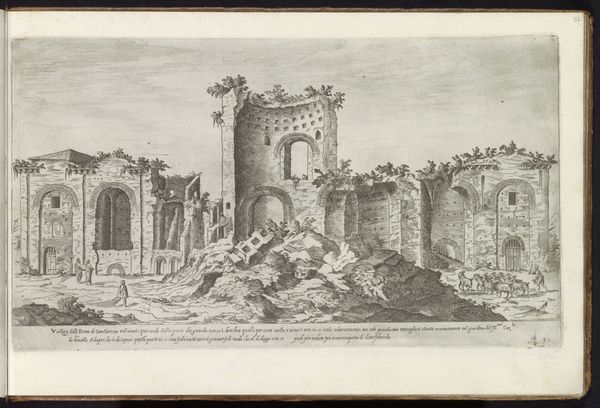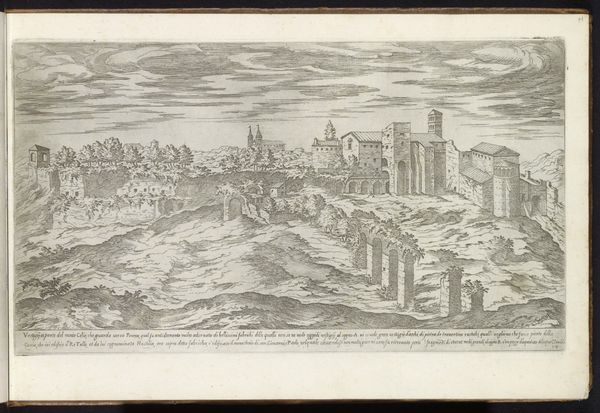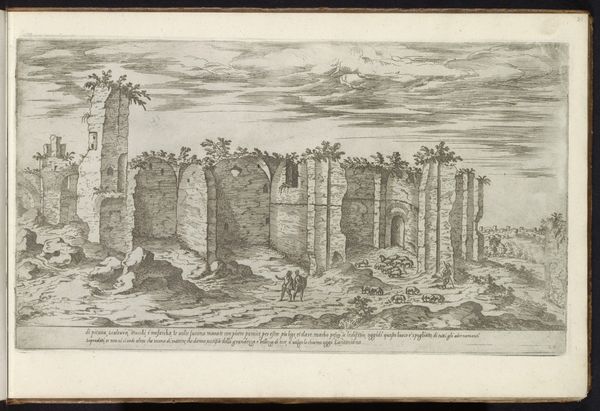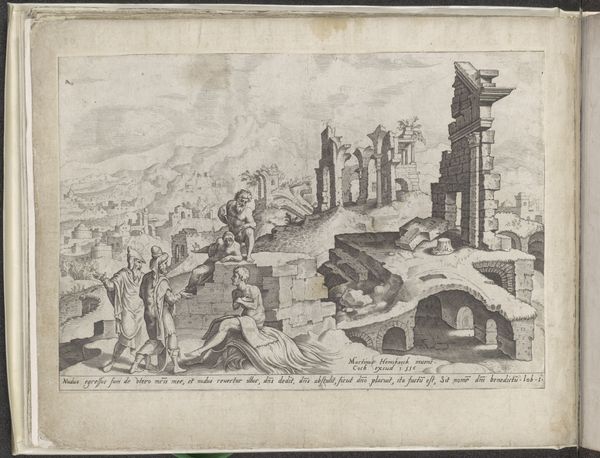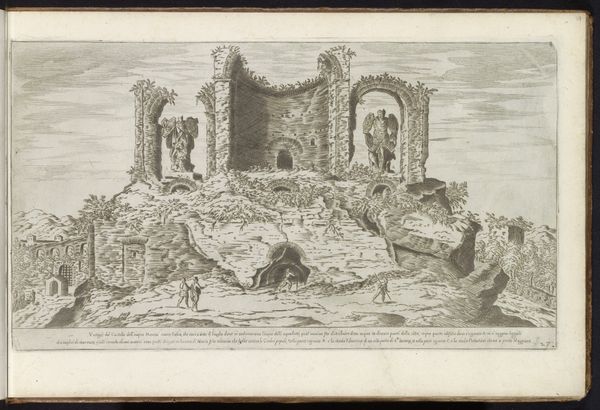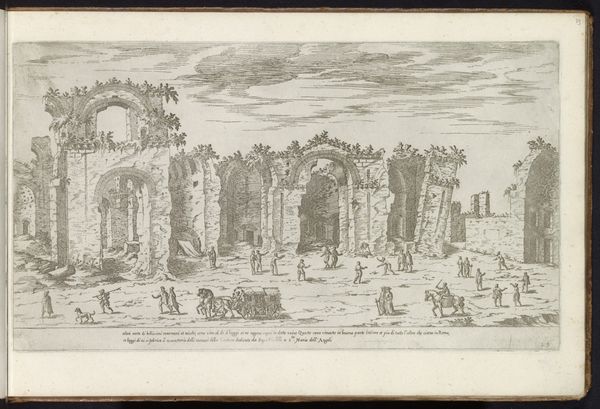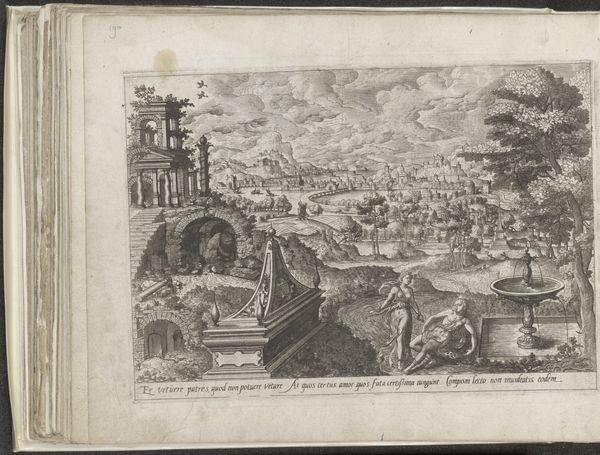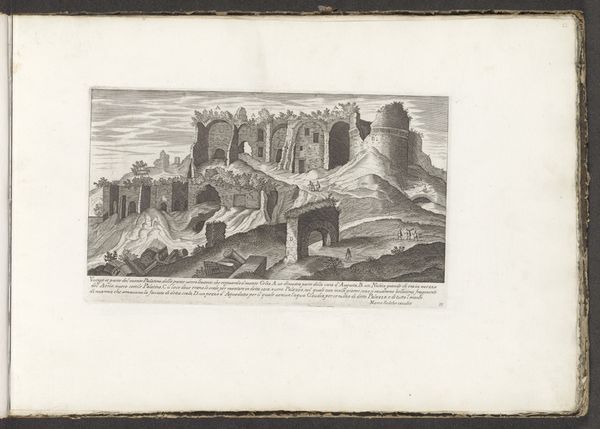
print, etching
#
ink drawing
#
pen drawing
# print
#
etching
#
landscape
#
mannerism
#
cityscape
Dimensions: height 214 mm, width 381 mm
Copyright: Rijks Museum: Open Domain
Étienne Dupérac created this print of the ruins of the Baths of Titus in Rome sometime before his death in 1601. The image presents a detailed depiction of the ruins, capturing the textures of the crumbling brick and stone. In Renaissance Europe, Rome held a central place in the cultural imagination, with its ruins serving as potent symbols of the rise and fall of empires. Artists like Dupérac found a ready market for images of these ruins among collectors and scholars. The print medium itself played a key role in disseminating knowledge about classical antiquity, allowing those who couldn't travel to Rome to study its monuments from afar. Visual codes, such as the careful rendering of architectural details, imbue the image with a sense of historical authenticity. To fully understand this image, one can turn to architectural treatises and historical accounts of Rome that were circulating at the time. Through them, we recognize the ways in which the meaning of art is always contingent on its historical moment.
Comments
No comments
Be the first to comment and join the conversation on the ultimate creative platform.
